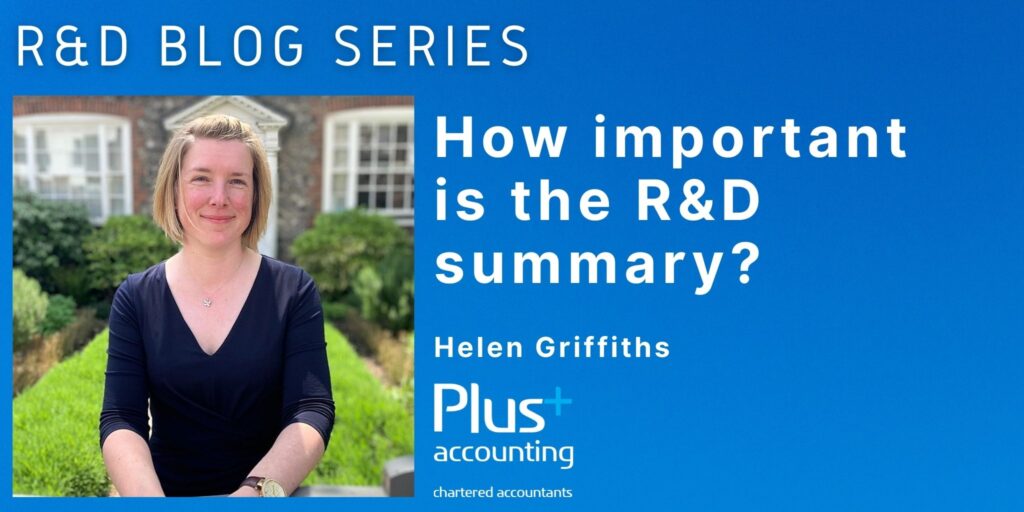HM Revenue and Customs (HMRC) require a summary to support the claim for Research and Development Relief (R&D). In recent months HMRC have identified more and more dubious R&D claims and in order to combat this they have appointed more inspectors to review claims.
What should the summary include?
It is helpful to refer back to the BIS definition of R&D because the summary requirements are based around this:
“R&D for tax purposes takes place when a project seeks to achieve an advance in science or technology.”
Therefore, you need to be able to explain:
- How the project looked for an advance and how it aimed to achieve this
- How the project had to overcome scientific or technological uncertainty
- How the uncertainty was overcome
- How the uncertainty could not easily be worked out by a professional in that field
What records do I need to keep?
Non-financial: it is useful to keep a record of planning meetings which might detail:
- When the project is to start and end
- What the project seeks to advance and how
- How will the project be structured e.g. staffing, external assistance
- Who are the professionals, in the field, you may need to consult and why are they considered to be the key professionals in the field
Financial: there will be instances where the project utilises existing staff and other resources, it is therefore important that a separate record of these costs is kept to support the R&D claim.
Staffing:
- Names of those involved in the R&D project, including timesheets for those not involved 100% of their time in the R&D project
- PAYE records, including pension payments
- Contracts of employment
Subcontractors:
- Invoices from the subcontractors
- Contract or similar documenting your arrangement
- Proof of payment e.g. bank statements
- Record of work carried out and if relevant how supervised
Software:
- Invoice for software costs
- Evidence to demonstrate how the software relates to the R&D project and cost allocated to R&D
Externally provided workers:
- Contract or similar documenting arrangement with provider
- Invoices from the provider
- Proof of payment e.g. bank statements
- Record of work carried out and if relevant how supervised
Links
Guidelines on the Meaning of Research and Development for Tax Purposes
R&D Blog Series
There will be several blogs in this R&D series:
- What is the difference between an SME and large company for R&D tax relief?
- What costs can I include in my R&D tax claim?
Disclaimer – Please be aware that the information provided in this article only applies up to 31 March 2023.

Author: Helen Griffiths, Accounts and Audit Manager, Plus Accounting
Any views or opinions represented in this blog are personal, belong solely to the blog owner and do not represent those of Plus Accounting. All content provided on this blog is for informational purposes only. The owner of this blog makes no representations as to the accuracy or completeness of any information on this site or found by following any link on this site


